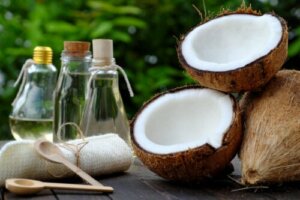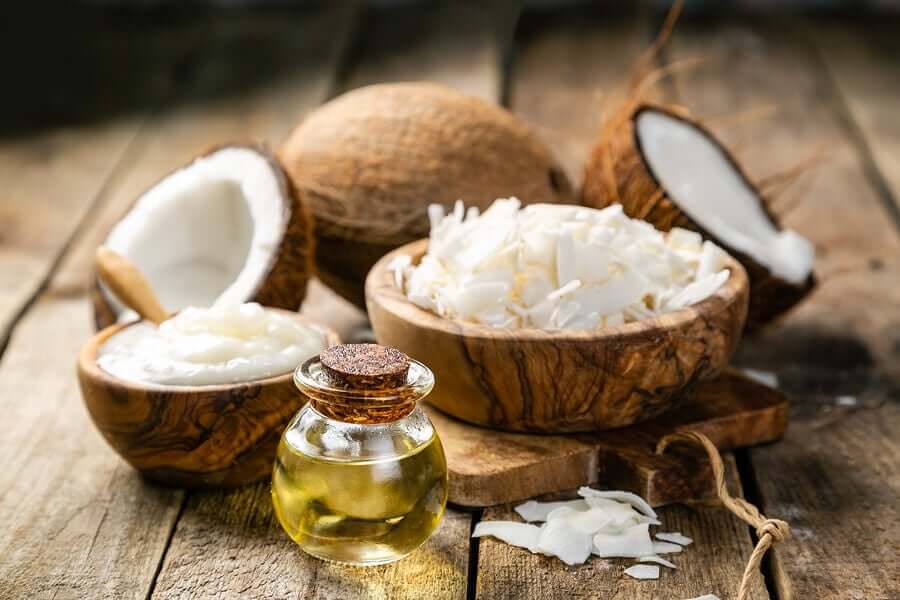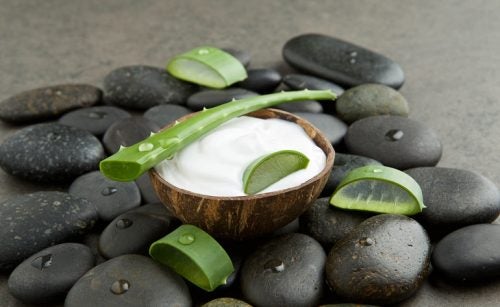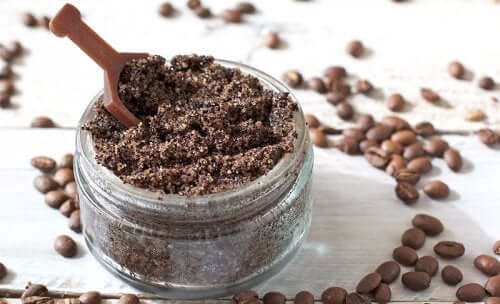5 Treatments With Coconut Oil to Reduce Stretch Marks and Scars


Written and verified by the doctor Karla Henríquez
The main purpose of coconut oil treatments is to help nourish the skin and prevent it from having an unfavorable appearance. They’re generally applied once the skin already has some kind of problem, such as stretch marks or recent scars. However, they can also be applied as a preventive measure, as part of your personal care routine.
Coconut oil contains vitamin E, fatty acids, antioxidants and proteins. That is, a set of nutrients that have a good potential when it comes to caring for the health of the skin.
As we mentioned before, there are many people who include it (as a preventive measure) in their body creams to keep their skin well cared for, while others apply it regularly when they want to attenuate scars, stretch marks, or other marks they may have on their skin.
Read also: Make Stretch Marks Less Noticeable With These 4 Natural Treatments
5 treatments with coconut oil to reduce stretch marks and scars
Coconut oil treatments can help deeply moisturize and soften the skin, while fading stretch marks and newer scars. Would you like to try them?

1. Hot coconut oil
It’s said that warm coconut oil -at a bearable temperature- is very relaxing, as well as moisturizing after a long day.
Ingredients
- 2 tablespoons of coconut oil (30 ml).
What should you do?
- First, heat the coconut oil using the technique of a hot water bath.
- Turn off the heat and remove from the stove when the oil has a warm appearance.
- Let the necessary time pass so that the coconut oil does not burn your skin and apply it on the stretch marks.
- It is recommended to do it after a bath. This way, you’ll give your skin enough time to absorb the oil and take full advantage of its benefits.
- Repeat regularly for best results.
2. Natural coconut oil
Natural coconut oil – that is, unheated, unmixed and unprocessed in any way – is also another option for pampering the skin.
Ingredients
- 2 tablespoons of coconut oil (30 ml)
What should you do?
- Instead of heating the oil, in this treatment, you’ll apply it at room temperature or as is.
- After a bath, it’s recommended to leave the skin moist for a better absorption of the coconut oil.
- Place a tablespoon of coconut oil in your hands and rub it until it melts and takes on a more liquid consistency.
- Then, it is applied with circular movements on the stretch marks that you wish to remove and, above all, in the areas most prone to their appearance (thighs, abdomen, waist or hips, among others).
3. Aloe vera and coconut oil

Ingredients
- ½ a cup of aloe vera (125 ml)
- ½ a cup (110 ml) of coconut oil (125 ml)
- 5 drops of rosehip oil
- 5 drops of olive oil (optional)
What should you do?
- In a deep bowl, mix the coconut oil and aloe vera for about five minutes or until you get a smooth and thick paste.
- Add a few drops of olive oil if you consider it necessary.
- Add a little rosehip oil and stir again.
- To apply it and use it as a treatment for stretch marks, apply it directly on the skin, after taking a shower, massaging circularly.
- Leave for 15 minutes before dressing.
4. Coconut oil and coffee
The mixture of coconut and coffee is very aromatic and can also help to exfoliate the skin in a very gentle way.
Ingredients
- ½ a cup of ground coffee (100 g)
- 3 tablespoons of coconut oil (45 ml)
- ¼ a cup of aloe vera (50 ml)
- 3 tablespoons of water (45 ml)
What should you do?
- In a bowl, add all the ingredients and mix them with a tablespoon of wood until you get a smooth and thick paste.
- This mixture will be enough to apply the remedy several times, so you can cover it and keep it in a dark place.
- After showering, take the amount you deem necessary and massage it on the skin for 5 minutes in a circle.
- Leave on for 30 minutes and wash with plenty of cold water.
- Repeat the process daily.

See also: Reduce Stretch Marks, Scars and Blemishes With This Home Remedy
5. Coconut oil and vitamin E
Vitamin E is known for its moisturizing properties and for the help it provides to the skin in general.
Ingredients
- 2 tablespoons of coconut oil (30 ml)
- 5 vitamin E capsules
What should you do?
- Heat the coconut oil using the water bath technique until it acquires a liquid consistency.
- Open the five capsules of vitamin E and combines its content with the coconut oil.
- Apply the mixture on your skin and massage it in circles.
- Leave on for 10 minutes and remove with plenty of cold water.
- Repeat two or three times a day.
Final Considerations
Apply coconut oil treatments every day and you will see how the appearance of your skin improves over time. Remember that in order to see results, you will need to be consistent.
However, depending on the depth and size of the marks and your skin type, you may need to resort to more specialized treatment. Therefore, don’t rule out consulting a dermatologist about the best treatment for you.
All cited sources were thoroughly reviewed by our team to ensure their quality, reliability, currency, and validity. The bibliography of this article was considered reliable and of academic or scientific accuracy.
- Ortí, J. E. de la R., Álvarez, C. S., Sabater, P. S., Cayo, A. M. B., Castillo, S. S., Rochina, M. J., & Yang, I. H. (2017). Influencia del aceite de coco en enfermos de alzhéimer a nivel cognitive. Nutricion Hospitalaria. https://doi.org/10.20960/nh.780
- FEDAPAL. (1987). Usos industriales de los aceites de palma y coco. Revista Palmas.
- Klein, A. D., & Penneys, N. S. (1988). Aloe vera. Journal of the American Academy of Dermatology. https://doi.org/10.1016/S0190-9622(88)70095-X
- Senet, P. (2008). Fisiología de la cicatrización cutánea. EMC – Dermatología. https://doi.org/10.1016/S1761-2896(08)70356-X
This text is provided for informational purposes only and does not replace consultation with a professional. If in doubt, consult your specialist.








